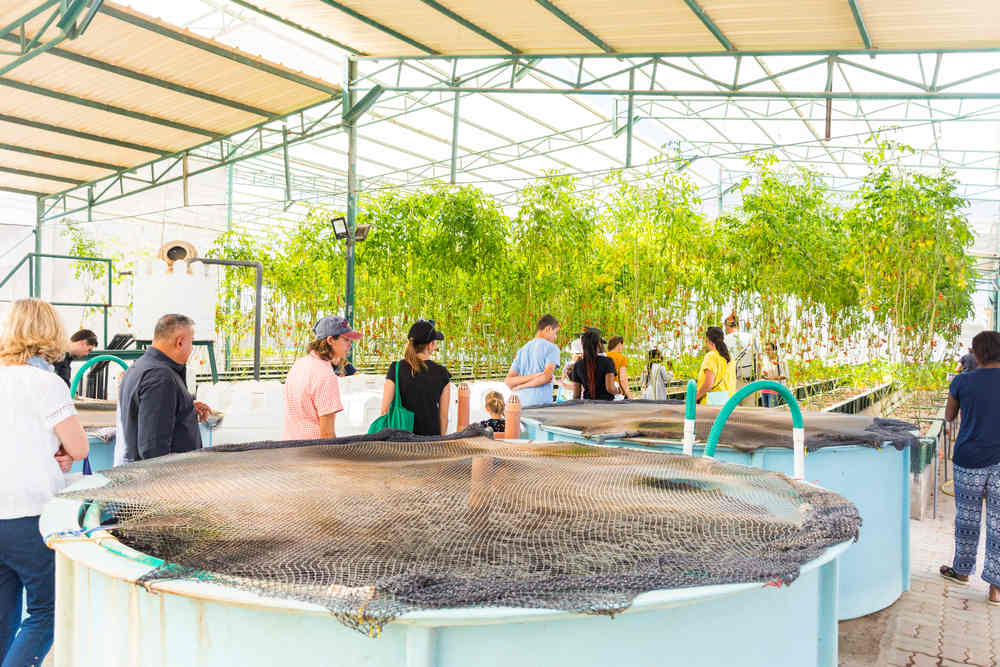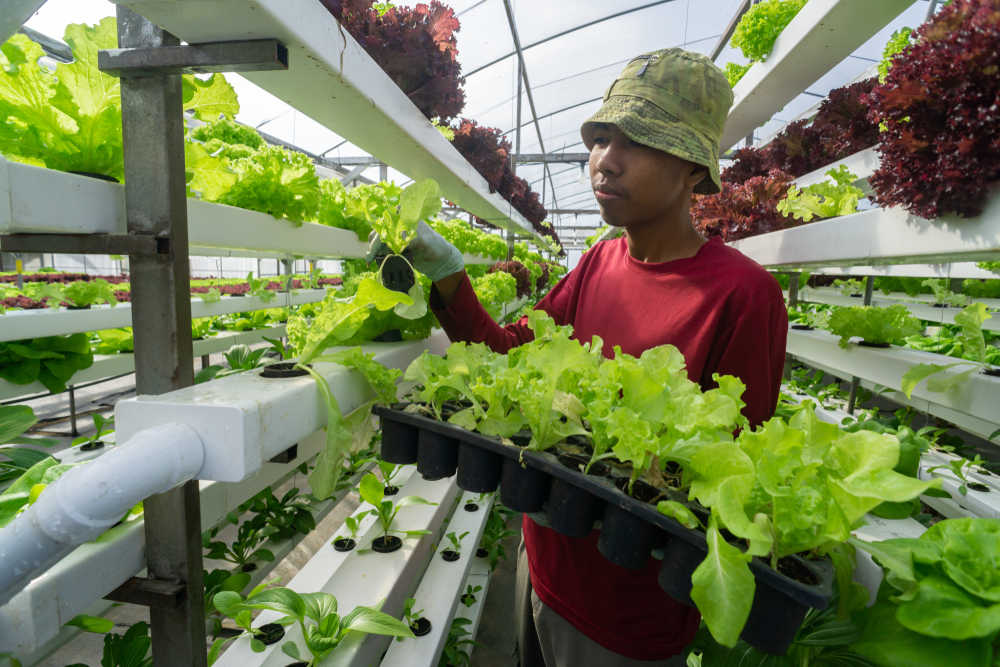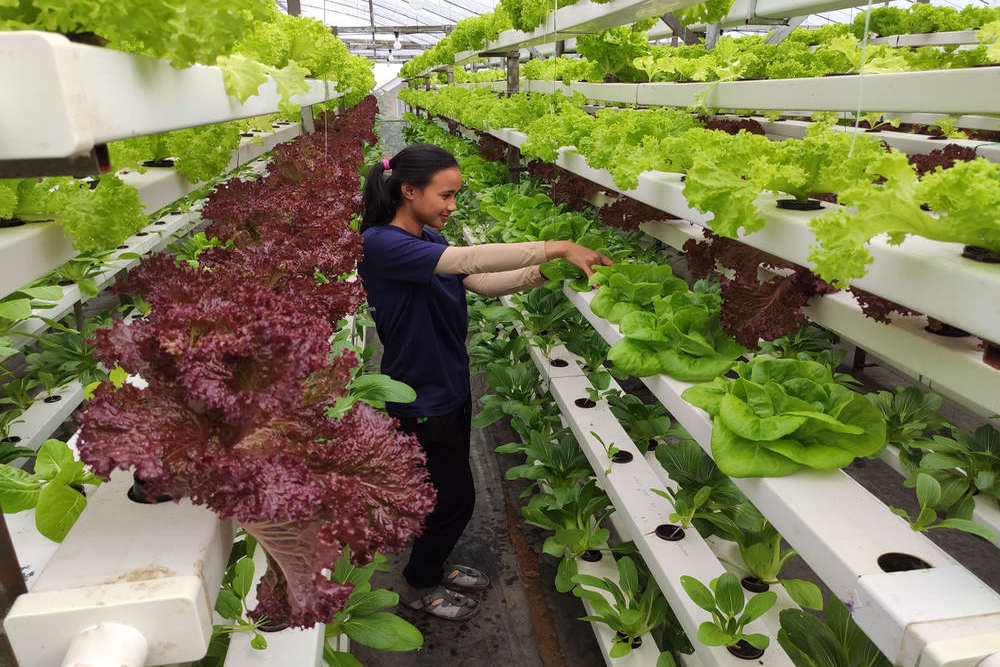The population of the world is the largest it has ever been, and it is estimated to reach nearly 100 billion by the year 2050. With more people to feed and less land to farm, the future isn’t looking too promising. That’s why sustainable solutions need to be implemented now. New and improved farming methods may be the solution to this problem. A sustainable farming method is known as vertical farming. By providing higher crop yields year-round in smaller spaces, it’s the most efficient method we have in place today for feeding the rapidly growing population.
What is Vertical Farming?
Vertical farming is the new and improved farming method that produces food on vertically inclined surfaces. Instead of farming fruits and vegetables on single-level planes, like fields or greenhouses, this method utilizes vertically stacked layers that are structured like a skyscraper. With the use of controlled environment agriculture (CEA) technology, it is today’s latest in modern indoor farming. Vertical farming uses artificial control of:
- Temperature
- Light
- Humidity
- Gases
To a large extent, vertical farming is similar to greenhouses that use metal reflectors and artificial lighting to augment natural sunlight. The major difference is that vertical farming is developed to maximize crop output in a very limited space.

How Does Vertical Farming Work?
There are four primary elements that make up vertical farming. They are:
- Physical Layout
- Lighting
- Growing Medium
- Sustainability Features
First and foremost, the main goal of vertical farming is to produce more food per square meter. In order to accomplish this goal, the crops are cultivated in stacks. Secondly, a well-balanced use of natural and artificial lights are used to maintain the perfect amount of light needed for the given plant. Thirdly, instead of soil, other growing mediums are used, such as:
- Aquaponics – a system of agriculture that utilizes waste produced by farmed fish to supply nutrients for the plants
- Aeroponics – a system of agriculture in which roots hang suspended in the air while nutrient solutions are sprayed onto them.
- Hydroponics – a system of agriculture that grows plants without soil, by using mineral nutrient solutions in an aqueous solvent.

These methods use various sustainability features to offset the energy cost of farming. This method also uses 95% less water than regular field farming methods.
How Vertical Farming Can Feed the World
Vertical farming is still a new concept, and we still need more data on it to be able to incorporate this method worldwide. However, with the direction it’s headed, it looks to be the most probable solution for ending world hunger and providing people with access to locally grown, fresh food. Whether it be urban areas or places where climate is an issue for crop growing, vertical gardens won’t be affected. Because the environment in which the plants grow is highly controlled, farming can happen anywhere, at any time of the year! Negative factors such as droughts, heatwaves, cold snaps, storms, and other natural events will not be an issue!
With vertical farming decreasing risks and enabling the usage of less water and space, feeding the world seems a little more probable! To sum up the advantages, vertical farming:
- Offers a plan to handle rising food demands
- Allows crop growth year-round
- Uses significantly less water
- Crops aren’t affected by bad weather
- Less exposure to pesticides and disease
- More organic crops

Applying Purpose to Profit
With all of the benefits vertical farming offers, it seems like the perfect solution for ending world hunger. However, the only issue with it is its high starting costs. With it being a fairly new concept, the costs for creating vertical gardens can be pretty high. However, this is where businesses with purpose come in. In order to make it more accessible, more businesses have to invest and execute it. For example, if you own a restaurant, you could implement a vertical garden to serve your customers fresh, daily picked vegetables. Apart from giving your customers some value (which is basically profit for you), you’re contributing to the future of vertical gardens (which will contribute towards the goal of ending world hunger). Having purpose and making a difference isn’t always about charity. Sometimes it’s about putting in the work yourself and working towards your objectives, and growing your vision. Aceneca believes in changing the world by applying purpose to profit. By growing your company, you can also grow your mission and impact on the world. All it takes is a little effort and a lot of heart!
Searching for ways to change the world for the better is our role as human beings residing on this delicate planet. Whether it’s to feed the hungry or use architecture to promote sustainability, we can all do something to change the world. If you’re looking for a way to positively impact the world, Aceneca would love to hear more about you!
